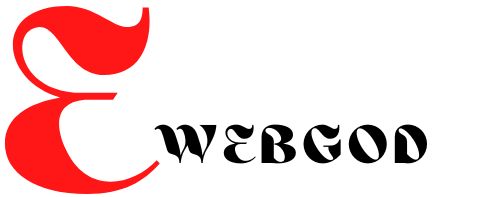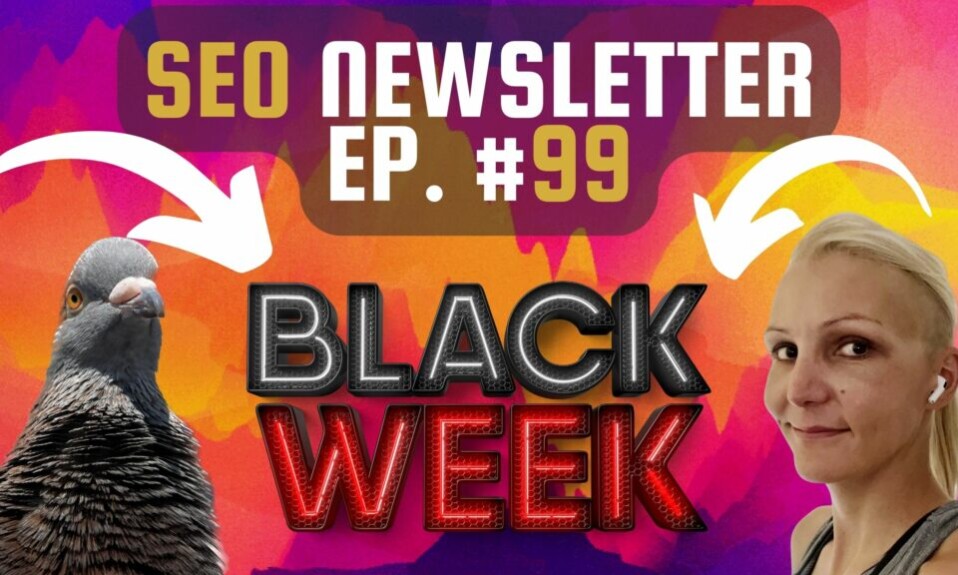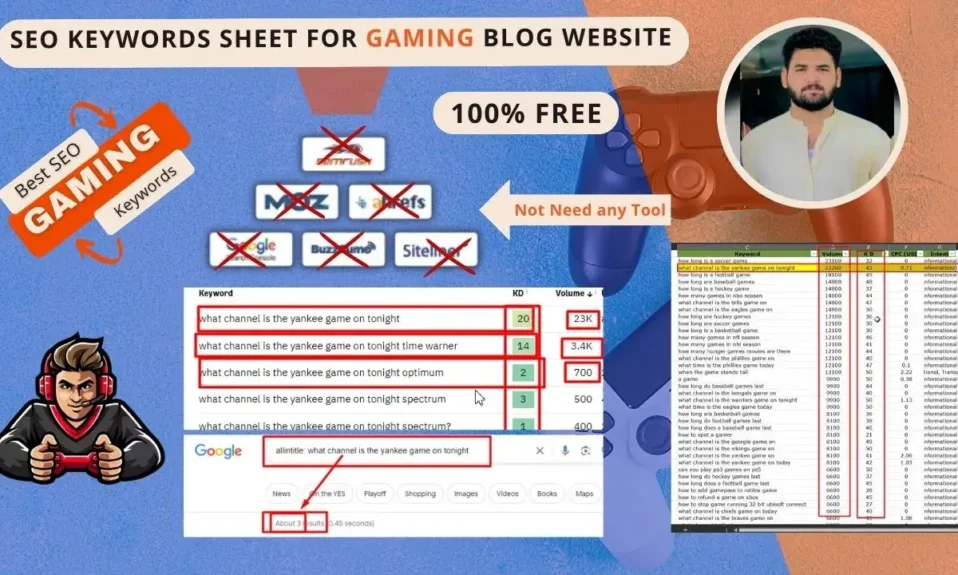

After analyzing a Google patent related to PAA and PASF, I began reviewing different recently-granted patents. And it wasn’t lengthy earlier than I surfaced one other very fascinating one concerning the usage of machine studying fashions. The patent I simply analyzed focuses on utilizing and/or producing a machine studying mannequin in response to a question (when Google must predict a solution since the usual search outcomes couldn’t present an sufficient reply). After studying the patent a number of occasions, it underscored how subtle Google’s techniques may very well be when needing to offer a top quality reply (or prediction) for customers.
Like with any patent, we by no means know if Google really carried out what the patent covers, but it surely’s at all times attainable. And if it was carried out, not solely may Google be using a educated machine studying mannequin to assist predict a solution to a question, however it will probably index these machine studying fashions, affiliate them with varied entities, webpages, and so on., after which retrieve and use these fashions for subsequent associated searches. Take into consideration how highly effective and scalable that may be for Google.
As well as, the patent explains that Google can return an interactive interface to the machine studying mannequin within the search outcomes, which allows customers so as to add parameters which can be utilized to generate a prediction for queries when the search outcomes aren’t enough. That a part of the patent had me fascinated with the message Google rolled out in the SERPs in April of 2020 when there aren’t high quality search outcomes being returned for a question. The present implementation doesn’t present a kind for customers to work together with, but it surely certain may in some unspecified time in the future. And perhaps that interface may very well be used for extra queries sooner or later versus simply the extra obscure ones it surfaces for now. I’ll cowl extra about this within the bullets beneath.
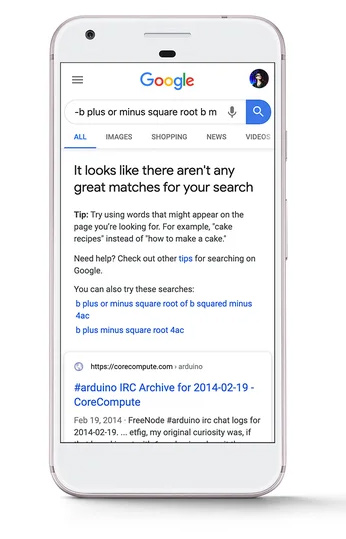
Key factors from the patent:
Just like my last post protecting one other latest Google patent, I feel one of the best ways to cowl the small print is to offer bullets containing key factors.
Generating and/or Utilizing a machine learning model in response to a search request
US 11645277 B2
Date Granted: Could 9, 2023
Date Filed: December 12, 2017
Assignee Identify: Google LLC
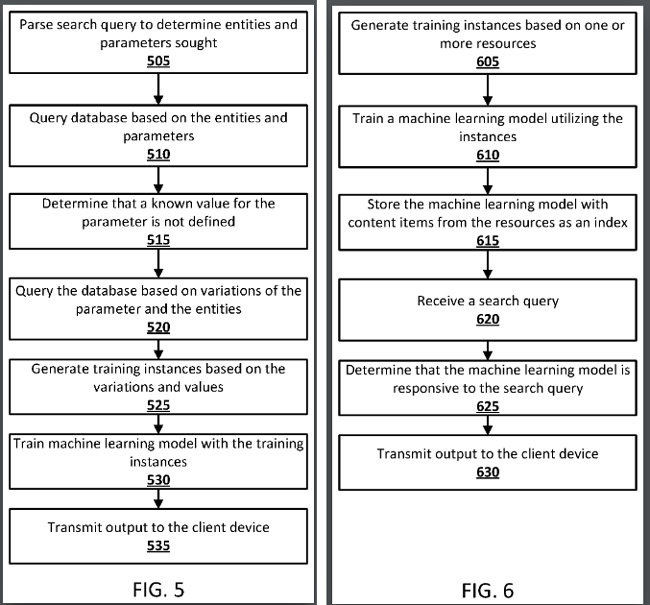
1. Google’s patent explains that if a solution can’t be situated with certainty, and the consumer submits a request that’s predictive in nature, a educated machine studying mannequin can be utilized to generate a prediction.
2. For instance, Google may first generate search outcomes primarily based on a question, but when the outcomes aren’t of enough high quality, then a machine studying mannequin can be utilized to offer a stronger predicted reply. So, the system can present predicted solutions primarily based on a machine studying mannequin when a solution can’t be validated by Google.
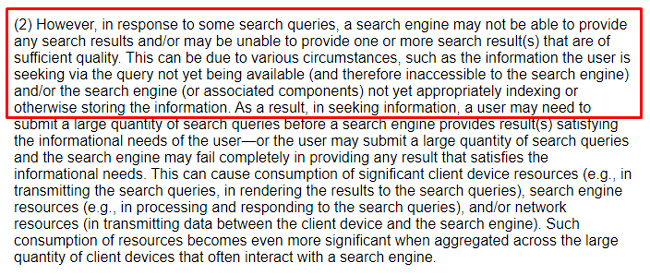
3. Additionally, the machine studying mannequin might be generated “on the fly”, and Google may retailer educated machine studying fashions in a search index. Sure, Google may index machine studying fashions that had been simply educated to offer predictions primarily based on particular kinds of queries. I’ll cowl extra about this quickly.
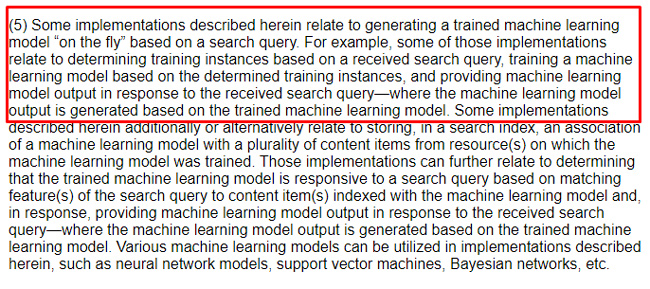
4. The patent offered an instance primarily based on the question, “What number of medical doctors will there be in China in 2050?” If an authoritative reply can’t be offered through the usual search outcomes, then the question might be handed to a educated machine studying mannequin to generate a prediction.
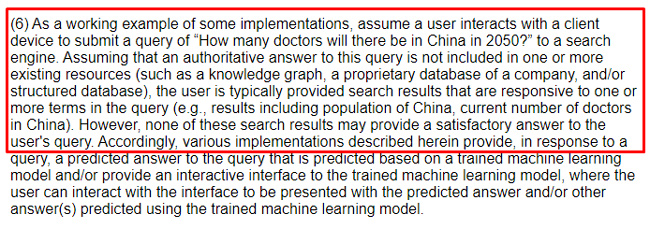
5. The patent goes on to clarify that the system may take different years like 2010, 2015, 2020, and so on. and use these to generate a prediction (through a machine studying mannequin educated on these parameters).
6. The patent explains that educated machine studying fashions might be listed by a number of content material gadgets from “sources utilized to coach the mannequin”. And for future queries, when the system identifies parameters which can be associated to a machine studying mannequin (e.g. if a subsequent consumer asks a associated query like, “What number of medical doctors the place there be in China in 2040?”), the machine studying mannequin may very well be used to generate a prediction.
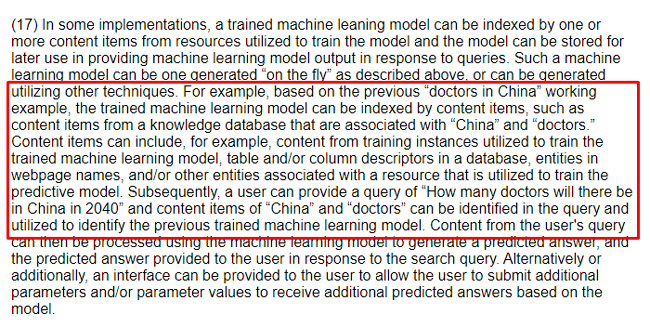
7. The patent goes on to clarify that the machine studying fashions may very well be saved with a number of content material gadgets, like entities in a information graph, desk names, column names, webpage names, and extra. As well as, phrases related to the question like “China” and “medical doctors” may very well be utilized by the machine studying mannequin to generate a prediction.
8. The patent goes on to clarify that the system may present an interactive interface for customers to pick out parameters that may be handed to the machine studying mannequin. That may be a textual content discipline, a dropdown menu, and so on. Additionally, the response may embrace a message introduced to the consumer that the response is a prediction primarily based on a educated machine studying mannequin. So Google desires to verify customers perceive it’s a prediction primarily based on a machine studying mannequin versus solutions offered primarily based on knowledge it has listed.

9. The educated mannequin can then be validated to make sure the predictions are of not less than a “threshold high quality”. Something beneath a sure threshold might be suppressed and never offered to the consumer. In that case, the usual search outcomes might be displayed as an alternative.
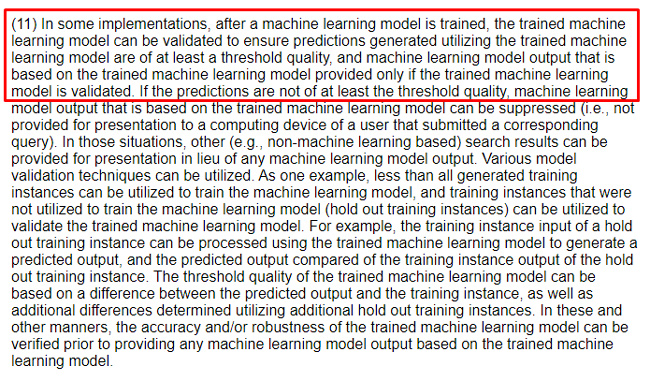
10. Past public search outcomes, the patent explains that the system may very well be used on a non-public database to assist corporations predict sure outcomes. The patent explains, “non-public to a gaggle of customers, an organization, and/or different restricted units.” For instance, an worker of an amusement park may ask, “what number of snow cones will we promote tomorrow?” The system may then question a non-public database to know gross sales of earlier days, climate info, attendance knowledge, and so on., to foretell a solution for the worker.
11. The patent explains that the system may present push notifications from an “automated assistant” in some unspecified time in the future. And simply pondering out loud, I’m questioning if that may very well be from a Jarvis-like assistant like I defined in my submit about Google’s Code Pink that triggered 1000’s of Code Reds at publishers.
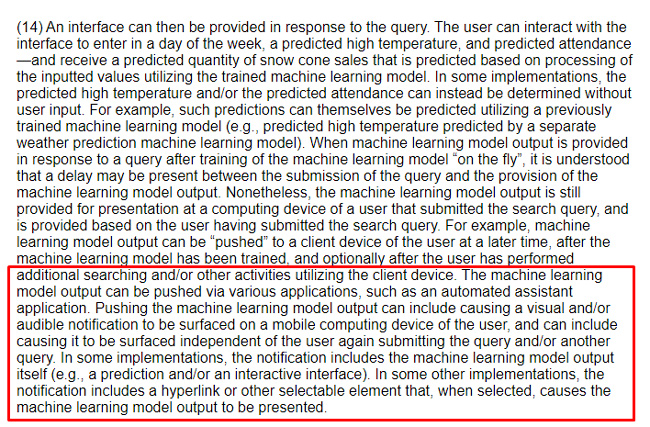
12. From a latency standpoint, the patent explains that there may very well be a delay after a consumer submits a question. When that occurs, the usual search outcomes may very well be initially displayed together with a message that “good” outcomes usually are not accessible for the question and {that a} machine studying mannequin is getting used to generate a prediction. In these conditions, the system may push that prediction to the consumer at a later time or present a hyperlink for customers to click on to view the machine studying output.
13. Additionally, the patent says for some conditions that the consumer must affirm the immediate to ensure that the method to proceed. For instance, the system may present a message stating, “An excellent reply shouldn’t be accessible. Would you like me to foretell a solution for you?” Then the machine studying mannequin can be educated provided that affirmative consumer enter is obtained in response to the immediate. Like I defined earlier, I see a reference to the “There aren’t nice matches in your search” message that rolled out in April of 2020. I’m questioning if that would increase to make the most of this mannequin sooner or later…
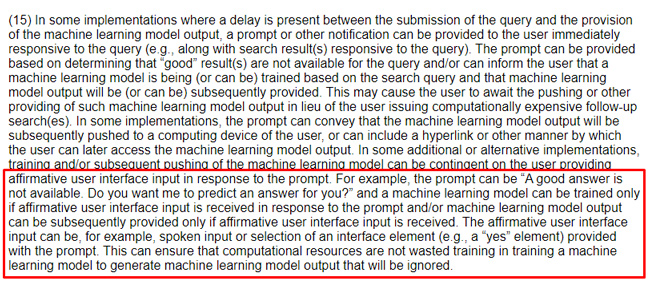
Abstract: Google may very well be predicting high quality solutions in a strong and super-efficient approach through (listed) machine studying fashions.
Though we don’t know if any particular patent is getting used, the ability and effectivity of this course of makes quite a lot of sense for Google. From producing machine studying fashions “on the fly” to indexing these fashions for future use to using an interactive interface with push notifications, Google appears to be setting the stage for an assistant like Jarvis. So, the subsequent time you ask Google to foretell a solution, take into consideration this patent. And also you may simply be prompted for extra info in some unspecified time in the future (till Jarvis can do all of this in a nanosecond). 🙂
GG
#Jarvis #Rising #Google #generate #machine #studying #mannequin #fly #predict #reply #Search #index #fashions #present #predictions #future #queries #Patent
